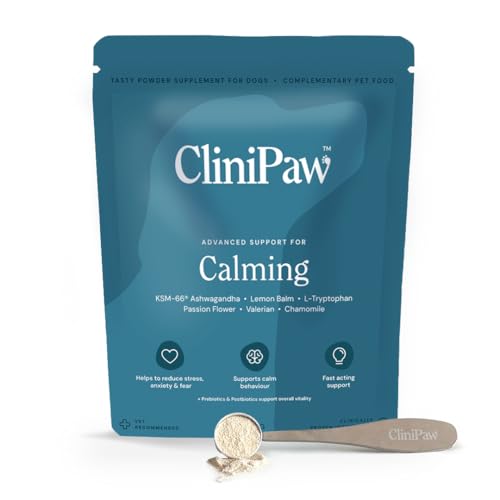




Before beginning the process, ensure the right tools are at hand: a pair of quality clippers or a nail grinder designed specifically for pets. Choose a quiet, comfortable space where your furry friend feels safe. This familiarity will help keep them calm during the trimming session.
Start by gently holding one paw, allowing your companion to acclimatise to the sensation. Carefully examine each claw, identifying the quick–the pink part within the claw that houses blood vessels and nerves. Avoid cutting into this area, as it can cause bleeding and discomfort.
For a precise cut, position the clippers at a slight angle, aiming to snip just the tip. If using a grinder, make sure to introduce it gradually, allowing your pet to adjust to the sound and vibration. Always offer praise and treats to reinforce positive behaviour throughout the process.
Regular maintenance is key. Establish a routine, trimming every few weeks, to keep those sharp tips at bay. This not only promotes comfort for your furry companion but also protects your furniture and floors from scratches.
Should any bleeding occur, having styptic powder on hand can quickly stop the flow. Apply a small amount directly to the nail tip, and the bleeding should cease shortly.
With patience and practice, this task can become a bonding experience, transforming what might seem daunting into a simple and enjoyable routine for both of you.
Filing Techniques for Paw Claws
Choose a gentle, curved file designed for animal use. Begin with a smooth, fine-grit surface to prevent discomfort. Hold the paw firmly but gently, ensuring your furry friend feels secure.
Steps to Follow
- Position your companion comfortably, perhaps on your lap or a non-slip surface.
- Gently lift one foot, making sure your buddy is relaxed.
- Start from the tip, moving towards the base, applying light pressure.
- Check for any signs of discomfort; adjust grip if necessary.
- Alternate between paws to maintain balance and comfort.
Tips for Success
- Reward with treats after each session to create positive associations.
- Keep sessions brief, around 5-10 minutes, to avoid stress.
- Consider using a file with a built-in guide to ensure even trimming.
- Regularly check for any signs of wear or damage on the file.
- Always clean the file after use to maintain hygiene.
Routine care not only helps maintain comfort but also promotes overall paw health. Celebrate progress, no matter how small, and enjoy the bonding experience!
Choosing the Right Nail File for Your Dog
Opt for a file that suits your furry friend’s size and nail type. For smaller breeds, a fine-grit file is often best, while larger dogs might require something more robust. Look for files specifically designed for pets, as these often provide a smoother experience.
Consider the material of the file. Glass or crystal files are gentle on the claws, reducing the risk of splitting or cracking. Metal files can be effective, but they may cause discomfort if not used carefully. Always test the file on a small area first to gauge comfort.
Electric options can save time and effort. These devices usually come with different speed settings and are suitable for dogs who may be anxious about traditional methods. However, introduce them gradually to avoid startling your pup.
Pay attention to the shape of the file. A contoured design can reach those tricky angles, ensuring a more thorough grooming session. If the file includes a built-in light, it can help to see the quick and avoid any accidents.
Finally, consider your own comfort. A file with an ergonomic handle allows for better grip and control, making the process easier for both you and your canine companion. Choosing the right tool can transform this task into a more pleasant experience for everyone involved.
Preparing Your Dog for the Nail Filing Process
Begin with a calm environment. Choose a quiet space where distractions are minimal. This helps in keeping your furry friend relaxed during the procedure.
Introduce the file gradually. Let your companion sniff and explore the tool before using it. This builds familiarity and reduces anxiety.
Use positive reinforcement. Reward your pet with treats or praise for any calm behaviour associated with the filing process. This encourages a positive association.
Practice handling their paws. Regularly touch and hold each paw, getting your canine used to the sensation. Incorporate gentle massages to create a soothing experience.
Consider short sessions. Start with just a few moments of filing, gradually increasing the duration as your pet becomes more comfortable with the sensation.
Keep calm yourself. Your emotions transfer to your furry friend. If you feel anxious, they might pick up on that. Stay relaxed and patient throughout the process.
If your companion shows signs of fear, take a step back. Allow them to relax before trying again. Forcing the issue can lead to negative experiences.
Establish a routine. Consistency helps your pet know what to expect. Regularly scheduled sessions create familiarity, making the experience more comfortable over time.
Step-by-Step Guide to Filing Your Canine’s Claws
Begin with a calm environment. Ensure the space is quiet and free from distractions. Invite your furry friend to sit or lie down comfortably.
1. Positioning
Hold your pet securely, either on your lap or beside you. For larger breeds, consider having someone assist you to keep the dog steady. Gently lift a paw, ensuring your companion feels at ease.
2. Filing Technique
Utilise the chosen tool with a gentle touch. Start from the tip and file towards the base in a smooth motion. Avoid pressing too hard; the goal is to maintain comfort. Regular short sessions prevent stress for both of you.
In case of resistance, take a break. Patience is key. Reward your dog with treats or praise to create a positive association. After completing this task, consider rewarding yourself with a moment of relaxation. If you’re interested in keeping your kitchen clean, check out this guide on how to clean a slow cooker.
With practice, this routine will become smoother, making it a bonding experience rather than a chore.
Identifying the Quick and Avoiding It During Filing
When tending to your furry companion’s claws, spotting the quick is paramount. The quick appears as a pinkish area within the claw, housing nerves and blood vessels. For light-coloured claws, it’s often easy to see, but with dark ones, it can be tricky. Always work slowly and carefully, especially if the claws are dark; filing gradually allows you to monitor your progress.
To avoid cutting into the quick, keep an eye on the colour change as you file. When the claw’s outer layer thins out and the colour shifts from a solid white to a slightly translucent or pink hue, stop. This indicates you’re nearing the sensitive area. If your pet seems uncomfortable or pulls away, take a break and reassure them.
Using a gentle touch is key. Regularly checking your progress during the process not only helps prevent injury but also builds trust between you and your pet. If you happen to accidentally hit the quick, keep styptic powder or cornstarch handy to manage any bleeding. A calm approach ensures a more pleasant experience for both of you.
Consider filing in a well-lit area, using a non-slip surface to keep everything stable. By being observant and patient, you can maintain your companion’s claws without causing distress.
Tips for Keeping Your Dog Calm During Nail Filing
Utilise high-value treats to create positive associations with the process. Whenever it’s time for a trimming session, reward your pet with their favourite snacks. This builds anticipation and makes the experience more enjoyable.
Choose a quiet, comfortable space for the activity. Reducing distractions helps your furry friend feel secure. Placing them on a non-slip surface can also provide stability, preventing sudden movements.
Incorporate Gentle Touch
Approach the trimming process with a soothing touch. Stroke your companion gently before starting and throughout the session. This physical contact can calm their nerves and keep anxiety at bay.
Use Calming Techniques
Consider soft music in the background to create a serene atmosphere. Many dogs respond positively to calming sounds. You might also try a calming spray or diffuser designed for pets, which can help ease tension.
Take breaks as needed. If your canine begins to show signs of stress, pause and offer reassurance. Patience goes a long way in helping them adjust to the routine.
Post-Filing Care for Your Canine’s Claws
After completing the trimming process, it’s crucial to focus on care. Begin by inspecting the paws for any signs of irritation or redness. If any discomfort is noted, consider applying a soothing balm specifically designed for pets.
Maintain Hygiene
Ensure that the area where the filing took place is clean. Dust and debris can accumulate, so wipe the paws gently with a damp cloth. This helps prevent infections and keeps the paws healthy.
Reward and Reinforce
Positive reinforcement is vital post-procedure. Treats or a favourite toy can make the experience enjoyable and encourage calm behaviour in future sessions. This helps build a positive association with the process.
| Tip | Benefits |
|---|---|
| Use a soothing balm | Reduces irritation |
| Clean paws after filing | Prevents infection |
| Offer treats | Encourages calm behaviour |
Keeping your furry friend well-nourished also contributes to their overall health. For high-quality nutrition, check out the best dog food at sams club. This ensures they have the energy to stay active and healthy, which in turn makes grooming easier.
When to Seek Professional Help for Nail Filing
Consider consulting a groomer or veterinarian if you encounter any of the following situations:
- Severe Anxiety: If your furry companion exhibits extreme fear or aggression during attempts at trimming, it may be wise to get expert assistance.
- Injury or Bleeding: Should you accidentally cut into the quick, leading to bleeding, a professional can provide care and ensure proper healing.
- Abnormal Growth: If the claws appear unusually long or misshapen, this could indicate underlying health issues that require a vet’s attention.
- Older or Ill Pets: Senior animals or those with health concerns often need special handling. Professionals are trained to manage these cases safely.
- Multiple Pets: If you own several animals and find it challenging to manage the grooming process, consider hiring a groomer who can handle multiple fur babies efficiently.
Regular check-ups with a vet can also help identify potential problems before they escalate. Don’t hesitate to reach out for help when needed; ensuring your pet’s well-being is paramount.






